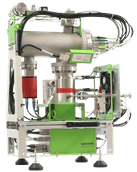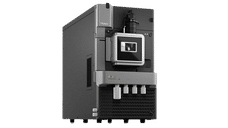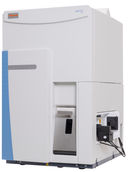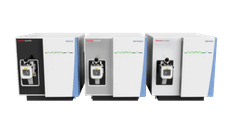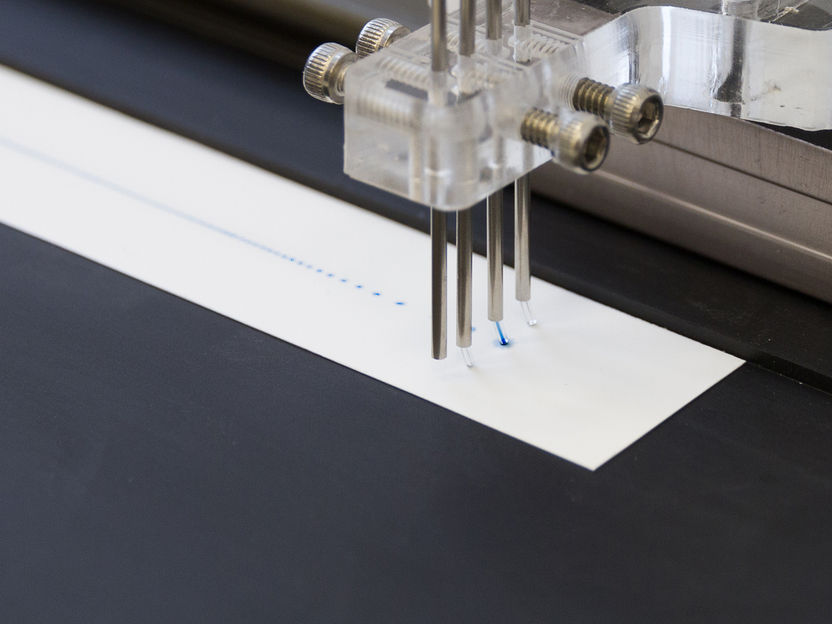Sulfurous acid H2SO3 - and it does exist
World's first proof under atmospheric conditions calls textbook opinion into question
Once again, the atmosphere amazes us with its diverse chemical processes. For the first time, researchers at the Leibniz Institute for Tropospheric Research (TROPOS) in Leipzig have demonstrated the existence of sulfurous acid (H2SO3) under atmospheric conditions in the gas phase. The results were published in the journal Angewandte Chemie.
In contrast to the well-known sulfuric acid (H2SO4), sulfurous acid (H2SO3) is considered as compound that is difficult or impossible to access (produce). Textbooks suggest the possible formation of H2SO3 in aqueous sulfur dioxide (SO2) solution, although its existence in isolated form is considered impossible. However, despite great efforts using various spectroscopic methods, the experimental detection of H2SO3 in aqueous SO2 solution has so far been unsuccessful. Only the corresponding bases bisulphite HSO3- and sulphite SO32- were detectable.
The only experimental detection of H2SO3 to date was achieved by Helmut Schwarz's team at TU Berlin in 1988 using in-situ generation in a mass spectrometer. An extremely short lifetime under vacuum conditions in the range of 10 microseconds and more was estimated.
Theoretical calculations suggested the formation of H2SO3 as a possible reaction product of the gas-phase reaction of OH radicals, which are formed in the troposphere primarily from ozone and water molecules in the presence of UV radiation, with dimethyl sulfide (DMS). DMS is mainly produced by biological processes in the sea and is the largest biogenic sulfur source for the atmosphere, producing around 30 million tonnes annually.
The possible reaction pathway to H2SO3 starting from the DMS was investigated experimentally in the laboratory at TROPOS in Leipzig. The formation of H2SO3 in the gas phase was clearly demonstrated in flow reactors for atmospheric conditions. Under the experimental conditions, the sulfurous acid remained stable for half a minute regardless of the humidity. Longer residence times could not yet be investigated with the existing experimental setup. Therefore, H2SO3 could also exist sufficiently long enough in the atmosphere and have an influence on the chemical processes. The observed yield was even somewhat greater than theoretically assumed. "It was very impressive to see the clear H2SO3 signals in the spectrometer for a compound that had been assumed to be possibly "non-existent"," says Dr Torsten Berndt from TROPOS, who came up with the idea and carried out the experiments.
The new reaction pathway was then implemented in a global chemistry-climate model. The associated model simulations showed that around 8 million tons of H2SO3 are formed globally every year. "This pathway produces about 200 times more mass of H2SO3 than the direct formation of sulfuric acid (H2SO4) from dimethyl sulfide in the atmosphere. The new results can contribute to a better understanding of the atmospheric sulfur cycle," add the scientists responsible for global modelling, Dr Andreas Tilgner and Dr Erik Hoffmann.
As with many research findings, many new interesting questions arise here too: Once formed in the gas phase, sulfurous acid appears to have at least a certain stability. However, the lifetime with regard to the reaction with trace gases in the atmosphere is still completely unclear. The reaction with water vapour has also not yet been satisfactorily clarified. "Much more research is needed in further optimised experiments in order to sufficiently clarify the significance of H2SO3," adds Dr Torsten Berndt.
The detection of H2SO3 is another example of the discovery of new reaction pathways and the experimental proof of compounds that were previously only theoretically proposed or difficult to access. This is made possible by the interplay of optimised reaction control combined with highly sensitive detection methods. For example, a mass spectrometer with a detection limit of 104 molecules of a product per cubic centimetre at atmospheric pressure was used in this study, i.e. it is possible to detect a specific molecule in a mixture of 1015 molecules (1 quadrillion molecules). Ever-improving methods will allow an even deeper insight into reaction processes and thus contribute to an even better understanding of atmospheric chemistry and all other areas of chemistry.
Original publication
These products might interest you
See the theme worlds for related content
Topic World Mass Spectrometry
Mass spectrometry enables us to detect and identify molecules and reveal their structure. Whether in chemistry, biochemistry or forensics - mass spectrometry opens up unexpected insights into the composition of our world. Immerse yourself in the fascinating world of mass spectrometry!

Topic World Mass Spectrometry
Mass spectrometry enables us to detect and identify molecules and reveal their structure. Whether in chemistry, biochemistry or forensics - mass spectrometry opens up unexpected insights into the composition of our world. Immerse yourself in the fascinating world of mass spectrometry!






















